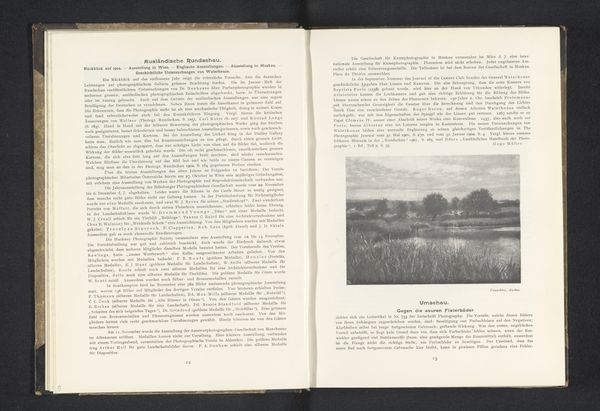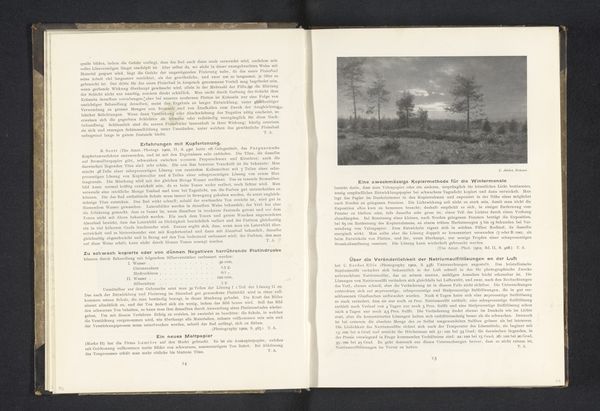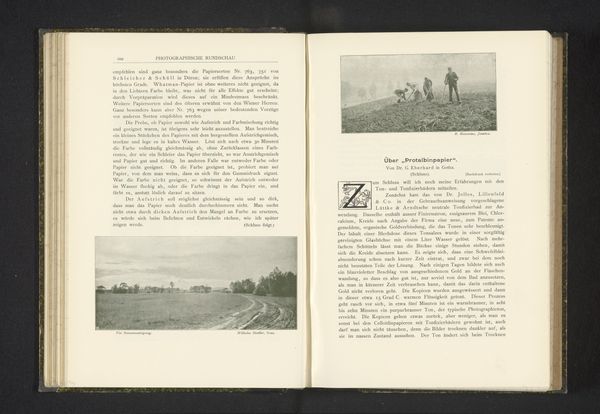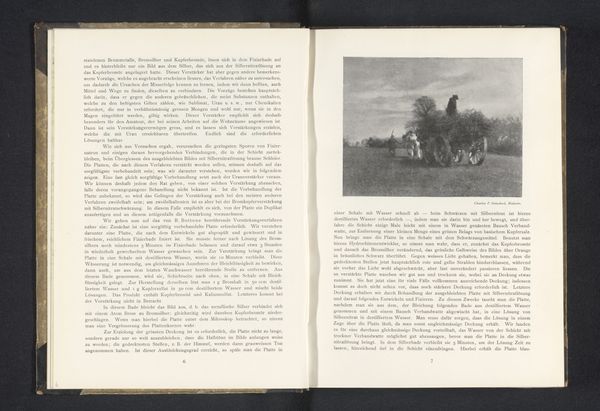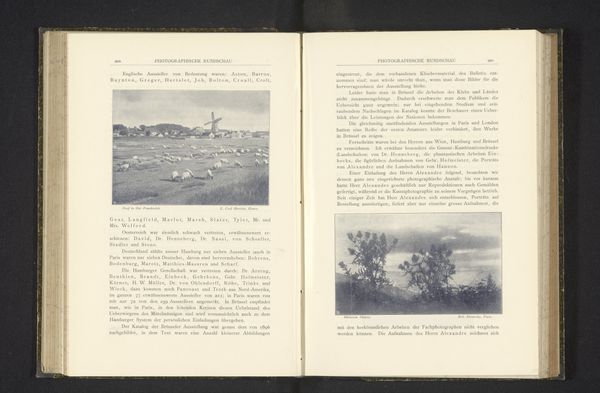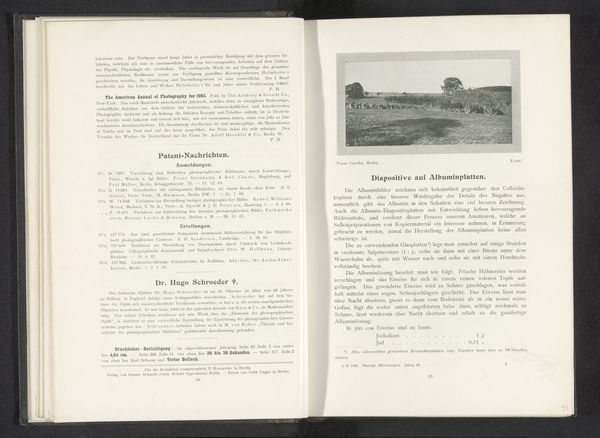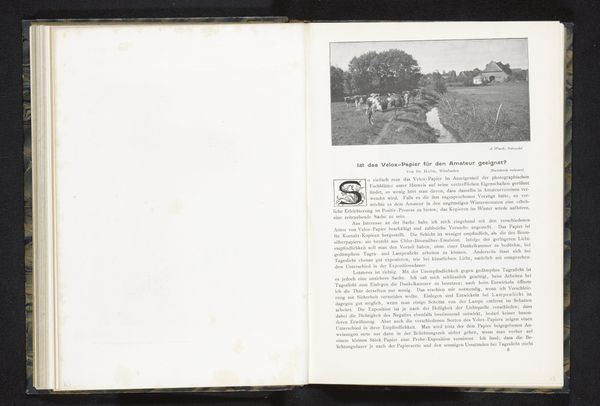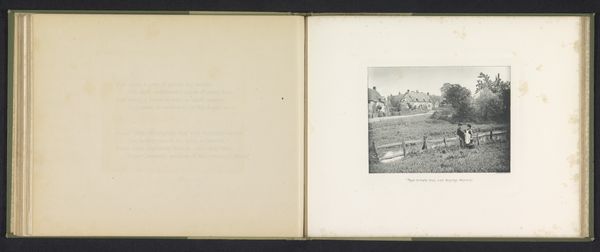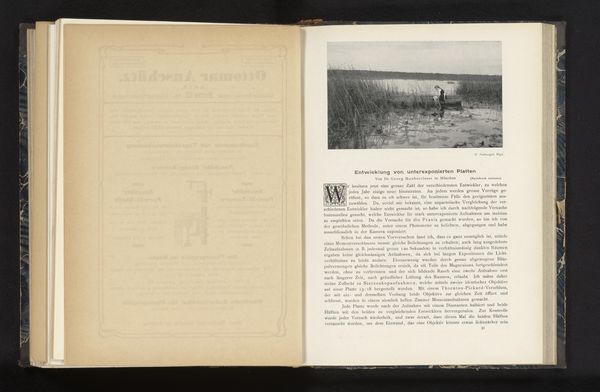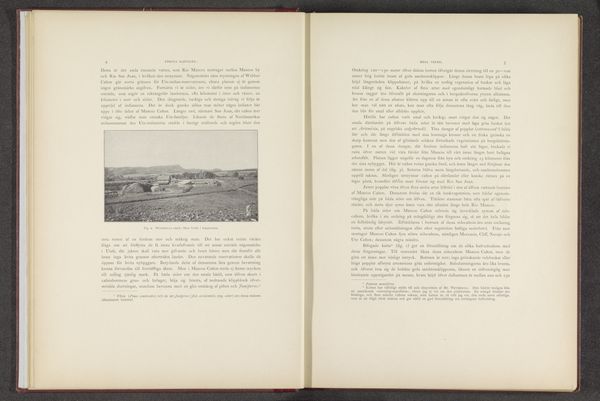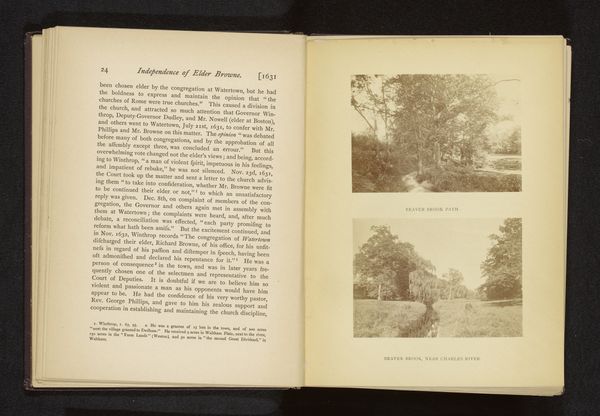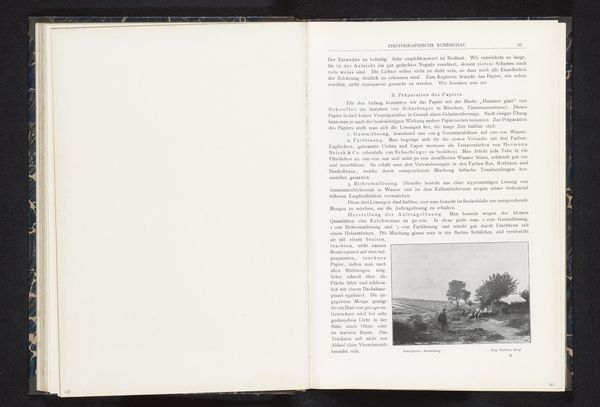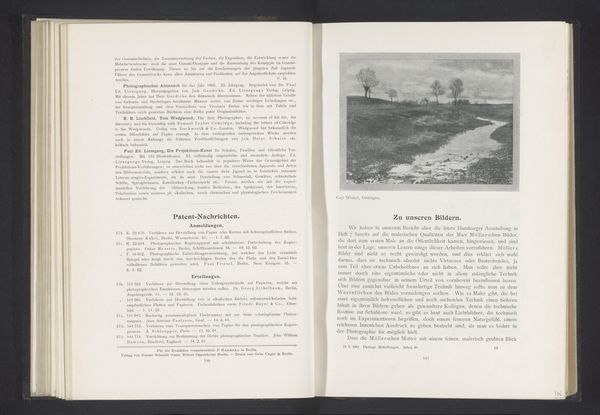
print, photography
#
aged paper
#
homemade paper
#
pictorialism
# print
#
landscape
#
photography
#
personal sketchbook
#
journal
#
fading type
#
stylized text
#
thick font
#
handwritten font
#
historical font
#
columned text
Dimensions: height 157 mm, width 120 mm
Copyright: Rijks Museum: Open Domain
Curator: Looking at this hazy landscape, I’m immediately struck by its dreamy quality. Editor: Yes, it has that signature Pictorialist aesthetic. This piece is titled "Gezicht op een weide met een hek," or "View of a Meadow with a Fence," and it's a print by Rudolf Eickemeyer, created sometime before 1901. Curator: It looks like it was carefully constructed rather than spontaneously captured. What about the photographic process itself interests you here? Editor: Eickemeyer’s technique is clearly visible; we can almost feel the handmade paper’s texture through the print. Knowing his dedication to crafting the image through both photographic and printing methods adds a critical layer to our interpretation. Pictorialist photographers strived to prove photography was an art form and manipulated the process extensively. Curator: I’m drawn to its accessibility and the subject's ordinariness, which, in its time, served as an implicit political statement. Eickemeyer was photographing rural settings during the turn of the century when urbanization became a hotly debated topic in art and public discourse. He captures the tranquil countryside rather than industrial expansion, creating a deliberate vision of simpler times. How might such an aesthetic choice play within a modern museum's socio-cultural framework? Editor: It reinforces that our cultural institutions selectively curate moments and contribute to specific visual rhetorics of place. Eickemeyer doesn't provide documentary reality but a manufactured nostalgia. Curator: Indeed. It also touches upon the role of the artist and the democratizing potential inherent to photography versus painting—considering its reproducibility and circulation, but as this is in a book format, its wide distribution and consumption possibilities are hampered. It raises questions about audience and value too. Editor: And how these images helped to define ideal notions of pastoral American life. Thanks to photography like this, people might not experience but would aspire to imitate it. Curator: Precisely, seeing these layers certainly enriches my experience. Editor: Mine too; understanding photography's position and construction of the socio-cultural context makes it that much more poignant to view these idyllic scenes now.
Comments
No comments
Be the first to comment and join the conversation on the ultimate creative platform.
